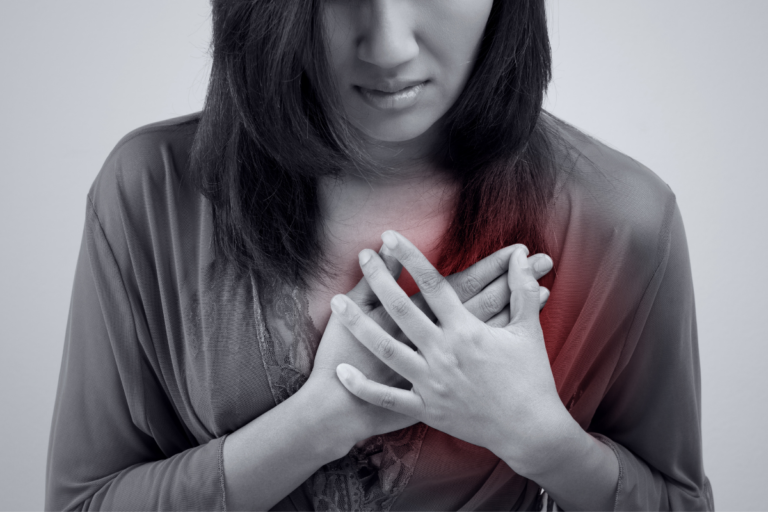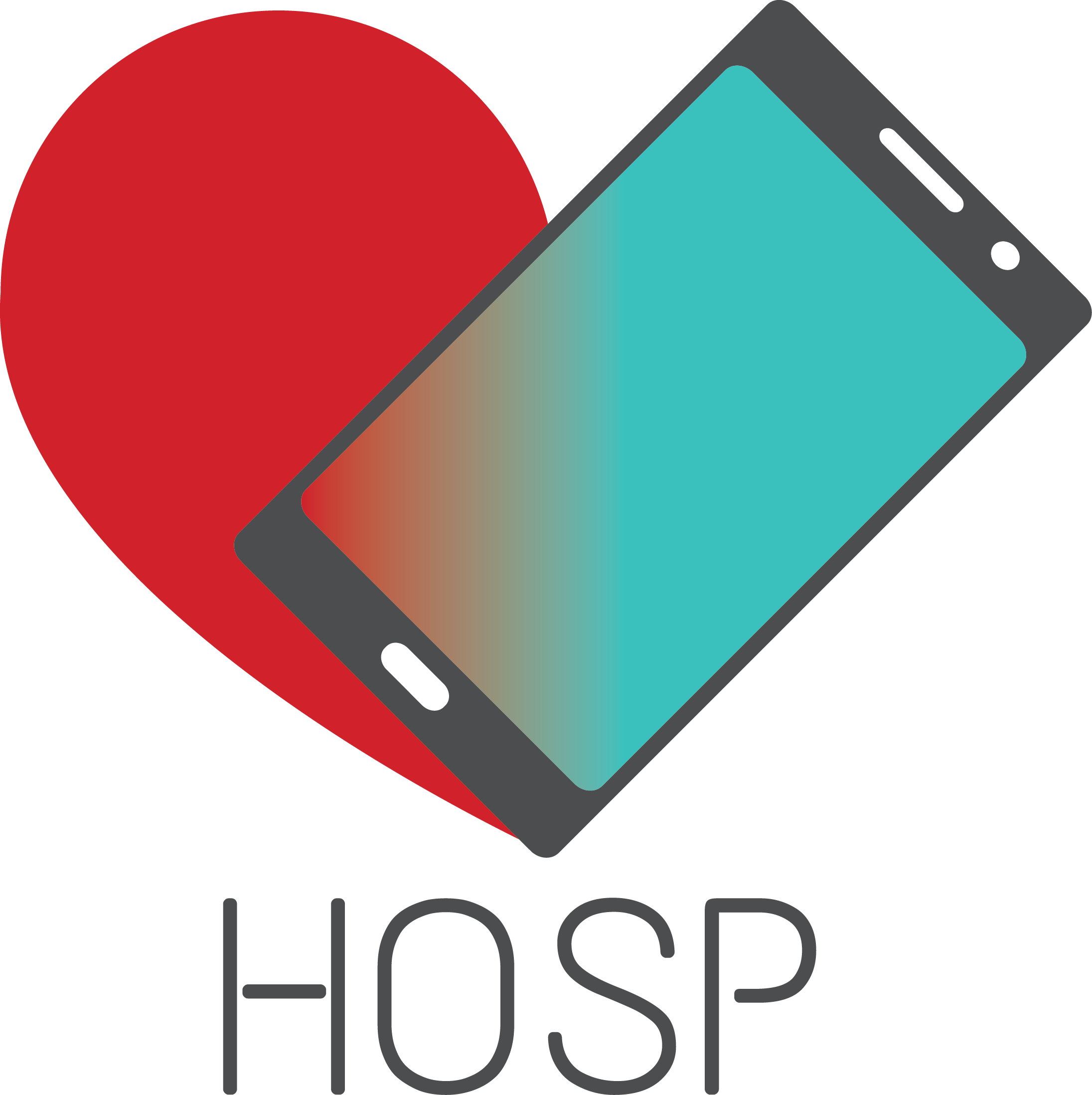Heart attack

Cardiovascular diseases, including heart attack, are the leading cause of death in the world, being responsible for 30% of all deaths or around 17.5 million people worldwide. In particular, ischemic heart disease is the leading cause of death overall, accounting for 28% of all deaths, while cerebrovascular accidents are in third place with 13% after tumors.
Pathophysiology of heart attack
In a heart attack, the heart muscle cells die due to the necrosis. This is a result of a pathological process characterized by the premature death of cells in the tissue or organ in a living organism. Blame is usually on the acute closure of one of the coronary arteries. These are the vessels that supply the heart muscle with nutritious and oxygen-rich blood. If the blood flow is inadequate, the heart muscle cells may die for just up to four hours. This can threaten the function of our blood pumping organ, and make the heart attack a life-threatening event.
The heart attack is usually based on atherosclerosis (vascular wall calcification) of the coronary arteries. Doctors often refer to it as coronary heart disease (CHD).
In the course of the years, the influence of certain risk factors on the inner wall of the vessel causes the formation of fat (cholesterol) and calcium deposits (so-called plaques). These factors do not only lead to an increased constriction of the vessels but can also suddenly rupture on their surface and acutely close a vessel. The reason for that is If the plaque surface breaks up, it is covered with a blood clot (thrombus) like a wound on the skin by the blood platelets (thrombocytes) flowing past in the blood. If the clot is big in dimension, it clogs the coronary artery, therefore cuts off parts of the heart muscle from the blood circulation, and thus from the oxygen and nutrient supply. This is the main risk for heart muscle tissue ischemia, which in the worst case leads to death.
Cause of heart attack?
The amount of cardiac muscle tissue that is threatened with death when coronary vessel closes depends in particular on the significance of the exposed artery, for example, if it’s a larger vessel or only a smaller lateral branch which is closed. The dead heart muscle cells are gradually replaced by scar tissue through time. If larger areas of the heart muscle are affected and changed by scarification the function of the heart is limited which may lead to heart failure. Not infrequently, the potentially dangerous irregularities of the heart rhythm (ventricular extrasystoles and ventricular tachycardia) may occur, and cause the problems additionally.
The most common cause of the cardiac arrest is a torn atherosclerotic plaque, which leads to a vascular occlusion through a blood clot. Rarer causes may include coronary artery embolism, stent occlusion, vascular occlusion by vascular spasm (coronary artery spasm), or complication of treating a closed coronary artery with a cardiac catheter (coronary intervention).
Signs and symptoms of hypertension
- Strong and persistent chest pain, which is usually the highest in the center of the chest, or slightly more on the left, and is felt in the form of pressure which can move into the shoulders, throat or hands. Patients often have a feeling that something has stumbled on their chest.
- Fast and irregular heartbeat. Doctors say that the heart rate flashes are not alarming at the times, but if the heartbeat is accelerated or irregular, and accompanied by dizziness or feeling of nausea, and shortness of breath, it can be seen as a sign of heart attack, heart stagnation, or arrhythmia. If arrhythmia progress, it can also cause a stroke or a sudden death.
- Prominent paleness and cold sweat on the forehead are the symptoms that appear often in men. So If you find yourself getting a cold sweat during an undemanding activity, such as laying in the bed and reading a book or watching a TV, this could be a sign of a heart attack.
- Unusual fatigue is the most common symptom among women and can occur just before the heart attack or even a few days earlier. Do not always blame your tiredness to spring and weather, but rather call your doctor and arrange for a review.
- Weakness and loss of appetite. The feeling of nausea and vomiting are not so rare symptoms of a heart attack. Abdominal swelling may also affect your appetite.
- Rapid breathing, shortness of breath. Continuous coughing may be a symptom of heart failure, and the result of fluid accumulation in the lungs.
Prevention
Naturally, nothing can be done against the hereditary predisposition to a heart attack. However, we can influence the other risk factors. The most important thing here is to combat the process of arteriosclerosis. The best way to do this is by quit smoking, start exercising enough, and preventing obesity. Patients should avoid junk food. Patients should choose a more healthy diet instead of being moderate with fat, sweet and salty. Do eat a lot of vegetables, fibers, and fruits. Because of an unhealthy diet, you get a lot of unhealthy fats (trans fats), sugar, salt, and simple carbohydrates. These ingredients can be found in among other things, the hamburgers, and also in the cake, candy bars, ready meals, snacks, and fried food.
What food is good for prevention of heart attack?
White unhealthy ingredients also include white rice, white bread, processed cereals, pasta, instant noodles, frozen pizzas, and lots of other so-called normal food. If you use a healthy diet consisting of a lot of variety of vegetables, fruits, whole breakfast cereals, chicken, olive oil, fish, complex carbohydrates from spelt and sourdough bread, whole grain pasta, quinoa, silver rice, chickpeas, and other legumes, then you reduce the chance of a heart attack occurrence. You must also handle alcohol with care. Do not drink more than two glasses of alcohol per day. It is important for diabetic patients to adjust their blood sugar as optimally as possible.
An aspect that you can look for close to yourself attacks. Although stress is not immediately physically visible it manifests itself through time. Stress plays a very important role in heart disease so let’s have a look at the average person. Many people experience daily stress regularly, for whatever reason. A little stress can not hurt, in fact, it serves as a defence mechanism to prepare a body for sudden changes. However, chronic stress is dangerous because it can lead to overweight, chronic illnesses, depression, and it can be a risk factor for a heart attack.

It is therefore very important to allow daily stress to flow out of your body. After a day of work, it is important that you relax. Through relaxation, you discharge stress and one of the ways to relax is physical exercise. Make sure that you go to sleep relaxed because sleep is also extremely important for general health.
Diagnosis of heart attack
The diagnosis of the heart attack (myocardial infarction) in a patient who appears in the emergency service is based on medical history, electrocardiogram (ECG) and blood tests.
Medical history includes a description of the symptoms, information about possible earlier events and possible risk factors that make a heart attack a likely diagnosis.
The ECG plays a large role in diagnosis (but certainly not everything) of the patients who show the typical changes in the electrical activity of the heart that indicate a fresh heart attack.
As regards to the blood tests, one which stands out from the others is the level of the protein called troponin. Doctors use this test, most widely in the diagnosis of a heart attack. Namely, this is a laboratory value that is very sensitive to a heart attack. Even a small increase above the normal value suggests that it comes from the damage of the heart muscle. The negligible number of other causes that could possibly mimic a heart attack with troponin is negligible. In addition, the troponin level can reveal even the slightest muscle damage relatively early, after about 4 hours of the onset of a heart attack.
Treatment of heart attack
People who experience heart attack symptoms should do the following:
- Patients who have angina should take one dose of nitroglycerin (a sublingual tablet or an aerosol) when symptoms appear. Then another dose every 5 minutes, up to three doses, or until the pain is reduced.
- Calling your local emergency number is crucial. This should be done first if three doses of nitroglycerin do not help in relieving of chest pain. Only 20% of heart attacks occur in patients with previously diagnosed angina. Therefore, anyone who develops symptoms of a heart attack should contact the emergency services.
- The patient should chew an aspirin (250 – 500 mg). Also to report that to the emergency services, as an additional dose of aspirin, in this case, is not necessary.
- A patient with chest pain should be immediately taken to the nearest emergency room, preferably by ambulance. Patients should not go on their own.
Treatments for heart attack and acute coronary syndrome include:
- Oxygen therapy, which is usually supplied through a tube in the nose or through a mask.
- Relieving pain and discomfort using nitroglycerin or morphine. Nitroglycerin produces dilating effects on blood vessels and morphine to relieve the pain.
- Blocking further blood coagulation, if possible using aspirin or clopidogrel, as well as anticoagulants such as heparin.
- The opening of the artery in which the disturbance of the bloodstream occurred must be made by angioplasty
- Beta blockers, calcium channel blockers or angiotensin-converting enzyme inhibitors are prescribed to improve the functionality of the heart muscle and coronary arteries.
- Correction of arrhythmia (irregular heart rhythm).
Patients who already have or have had a cardiovascular disease benefit from the removal or reduction of known risk factors, but they can also benefit from the use of medicines. For example, to reduce blood clotting or to lower blood pressure which is called secondary prevention.
ACE inhibitors / AT1 antagonists
ACE inhibitors / AT1 antagonists are important drugs for treating patients after a heart attack. They are especially important for patients at risk of developing heart failure as they lower the blood pressure and improve the pumping power of the heart. This improves the functioning of the heart and the chance of a heart attack is getting smaller.
Acetylsalicylic acid
Aspirin (acetylsalicylic acid) is an antiplatelet medication. It inhibits the formation of blood clots and thins the blood. This reduces the chance of clotting of the coronary artery. A variant of acetylsalicylic acid is carbasalate calcium.
Clopidogrel
Clopidogrel is taken to prevent the risk of blood clots forming in calcified blood vessels (arteries). Therefore, it works preventively against a heart attack and stroke. This drug works just like aspirin (acetylsalicylic acid) on the platelets, but on a slightly different principle. A platelet is a very ingenious part of the blood coagulation system. It has several ways through which it can perform its function. Aspirin works on one path and blocks it, and clopidogrel on the other hand again blocks a slightly different path.
Beta blockers
Beta-blockers lower blood pressure, slow the heart rate and reduce the oxygen demand of the heart. The chance of a succeeding heart attack occurrence is being lowered.
Anticoagulants
Anticoagulants inhibit the formation of blood clots and thus reduce the risk of a blood vessel occlusion. This reduces the chance of having a heart attack (Heparin is usually prescribed during treatment along with thrombolytic therapy for 2 days or more).
Statins
They lower cholesterol, especially LDL cholesterol. Besides, they promote the stabilization of inflammatory processes in atherosclerotic plaques. Anyone who has taken statins before the heart attack should definitely continue the therapy. Also it is possible to start it as soon as possible after the heart attack in high doses – regardless of the initial cholesterol levels.
Calcium channel blockers
Calcium channel blockers can alleviate the condition in patients with unstable angina, whose symptoms do not diminish when taking nitrates and beta-blockers, or are used in patients who are contraindicated in taking beta-blockers.
Supplements
Supplements are used as addition to regular therapy and food. Doctors usually prescribe: Garlic, Coenzyme Q10, Omega-3fatty acids.
Garlic
This well-known kitchen plant is one of the best supplements for keeping your heart in good health. It supports cardiovascular health and circulation. Several studies on humans have confirmed the ability of garlic to effectively reduce the blood pressure as well as to positively affect cholesterol levels in the blood. Garlic can increase the production of a vasodilator in the blood known as cGMP, and so on help the relaxation of the heart’s smooth muscle tissue and the blood vessels in order to promote normal circulation by causing the expansion of the blood vessels.
Coenzyme Q10,
Found in most body cells, it is a key factor in cellular energy production, especially in the heart, liver, and kidneys. Coenzyme Q10 is also a powerful antioxidant. In patients with heart failure, there is a lower level of Coenzyme Q10, and this reduction may cause further heart failure. Coenzyme Q10 can slow the worsening of a heart’s condition, reduce the chance for hospitalization and death. Supplemental coenzyme Q10 can improve heart health.m 45 BC, making it over 2000 years old. Richard McClintock, a Latin professor at Hampden-Sydney College in Virginia, looked up one of the more obscure Latin words
Omega-3fatty acids
A recommendation in primary and secondary prevention is to reduce the concentration of fat in the blood. Also, to raise the levels of those fats that are necessary for the normal operation of the human organism. That’s exactly the way that Omega-3 fatty acids work. Patients take omega-3 fatty acids in two ways. One way is the hygienic-dietary regime rich in omega-3 fatty acids. It is probably the most natural way, but not the simplest. Another way is supplementation with nutritional supplements.
